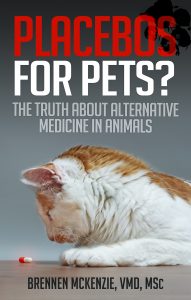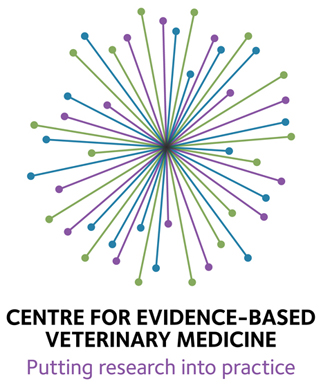Some of the most popular forms of alternative medicine are the myriad herbs and “dietary supplements” (a faux category created by the 1994 Dietary Supplement Health and Education [DSHEA] act to allow marketing of unproven drugs without regulatory oversight). These nostrums are potentially more useful than outright quackery like homeopathy or “energy medicine” because they contain actual physiologically active chemicals. Unfortunately, that means these are also the most likely for of CAM to cause direct harm.
There have been numerous examples of this kind of harm in the past. Kidney failure caused aristolochic acid in traditional Chinese medicines, lead poisoning from contaminated Ayurvedic and Chinese preparations, and deaths from ephedra-containing supplements such as ma huang are among the most dramatic and well-publicized examples. Below is an extensive list of references regarding these and other such examples.
Despite this, the perception that such preparations are “safe and natural” still seems widespread, and it seems difficult to disabuse people of this notion. However, I am encouraged by a number of recent indications that the risks associated with untested and unregulated supplement use may be getting more attention. I recently wrote about an article looking at the association of herbal therapy with poorer compliance and quality of life in asthma patients.
Another article on the subject that recently caught my attention was entitled Dietary Supplement Polypharmacy: An Unrecognized Public Health Problem?, published in eCAM. The article is essentially a series of anecdotes, so of course it proves nothing about the overall impact of herbal remedies. However, the theme that emerges from the cases reported strikes me as key to understanding the risks of such treatments. The cases almost all involved people who took herbal preparations for more psychological than medical or rational reasons. They generally took a variety of supplements, often with no systematic dosing or schedule or even any understanding of what they were taking or what the intended effects or possible side effects were. This is only possible because these people accepted the baseless notion that somehow because they were “natural” these preparations could be expected to have beneficial effects without any risk, any dose/response relationship, or any of the usual limitations know to affect pharmaceuticals.
Ironically, the people discussed in the article also commonly reported turning to herbs and supplements because of fears of the side effects of conventional medical therapies. This is similar to the attitude reported in the study of asthma patients. Clearly, any therapy that has measurable effects is going to be tinkering with a complex and massively interconnected system, and this makes it highly likely that unanticipated or undesirable effects will occur as well. In scientific medicine, it is understood that all therapeutic decisions require a cost/benefit analysis, and that while it is appropriate to avoid unnecessary interventions that might do more harm than good, there are clearly many circumstances in which the risks of a treatment are far outweighed by the potential benefit. CAM advocates and users seem to have the notion that these rules only apply to conventional medicine, and they tend to have an exaggerated awareness of risks while taking the benefits for granted. They then fall prey to the irrational and demonstrably false notion that CAM therapies are exempt from the rules of pharmacology and physiology that constrain scientific medicine and that they can somehow get something for nothing–benefits without risk. This is a dangerous notion which must be debunked so that the true potential of herbal medicines can be developed in a rational and scientific way and unnecessary risks be avoided.
Finally, the cases illustrate the sense many CAM users have of not being in control of their medical care when dealing with conventional, scientific medicine. Being able to change their diet, take supplements or herbal remedies guided by their own internal sense of how they are responding, and so on gives them a feeling of having some control over their bodies and their care. This is a challenging psychological issue. Scientific medicine has rightly moved away from the paternalistic model and acknowledges that patients have the ultimate right to make decisions about their own care. However, it is also an undeniable fact that health care have factual knowledge and a overall perspective that make their assessments and decisions about specific interventions generally more reliable than those of lay people with a personal and intense emotional investment in their or their pets health.
Somehow, scientific medical providers need to do a better job of dealing with the psychological aspects of disease in their patients or, in the veterinary domain, their patients’ owners. We must understand and manage the normal psychological factors that lead people into use of unproven or bogus therapies while maintaining a solidly scientific and evidence-based standard for the medicine we employ. And we must do all of this within the limitations of time and resources under which we operate. A significant challenge indeed.
Another article I ran across recently that bears of the dangers of herbal medicine use is A review of the potential forensic significance of traditional herbal medicines in the Journal of Forensic Sciences (Byard RW. 2010:55(1);89-92). This is a nice summary of some of the specific dangers of unregulated and unscientifically used herbal preparations, including direct toxicity, heavy metal poising, adulteration with toxins, interaction effects of multiple active compounds taken together, and interactions with conventional medicines. These risks are exacerbated by the facts that many users of herbal remedies don’t tell their doctors what they are taking (or they may not know themselves), most doctors know little about the possible risks of such remedies, and there is no meaningful regulatory control over the preparation or marketing of these products.
On this last point, a revision to DSHEA has been proposed in the Senate by Tom McCain (R-AZ) and Byron Dorgan (R-ND). While not perfect, this bill would improve the FDA’s ability to monitor dietary supplements and other currently under-regulated supplements and to force removal of these from sale if there is evidence of harm. Given the power of the supplement lobby and their biggest legislative boosters, Tom Harkin (D-IA) and Orin hatch (R-UT), and the general anti-regulation mood of the country, I am not overly optimistic this will become law, but I am encouraged at least that mainstream political figures are at least willing to talk about the inadequacy of consumer protections in the area of herbs and supplements, and this alone may raise awareness of this underappreciated risk.
Coon JT, Ernst E. Panax ginseng: A Systematic Review of Adverse Effects and Drug Interactions. Drug Saf 2002;25(5):323-44 Drug Saf 2002;25(5):323-44
Cupp MJ Herbal remedies: adverse effects and drug interactions. Am Fam Physician 1999 Mar 1;59(5):1239-45
Debelle FD, Vanherweghem JL, Nortier JL. Aristolochic acid nephropathy: a worldwide problem. Kidney Int. 2008 Jul;74(2):158-69. Epub 2008 Apr 16.
Emery DP, Corban JG Camphor toxicity. J Paediatr Child Health 1999 Feb;35(1):105-6
Ernst E Adverse effects of herbal drugs in dermatology. Br J Dermatol 2000 Nov;143(5):923-
Fugh-Berman A Herb-drug interactions. Lancet 2000 Jan 8;355(9198):134-8
Huang WF, Wen KC, Hsiao ML. Adulteration by synthetic therapeutic substances of traditional Chinese medicines in Taiwan. J Clin Pharmacol. 1997 Apr;37(4):344-50
Lai MN, Lai JN, Chen PC, Tseng WL, Chen YY, Hwang JS, Wang JD. Increased risks of chronic kidney disease associated with prescribed Chinese herbal products suspected to contain aristolochic acid. Nephrology (Carlton). 2009 Apr;14(2):227-34.
Lawrence JD. Potentiation of warfarin by dong quai. Page RL 2nd, Pharmacotherapy 1999 Jul;19(7):870-6
Means C. Selected herbal hazards. Vet Clin North Am Small Anim Pract 2002 Mar;32(2):367-82
Norred CL, Finlayson CA Hemorrhage after the preoperative use of complementary and alternative medicines. AANA J 2000 Jun;68(3):217-20
O’Connor A, Horsley CA. Yates, KM “Herbal Ecstasy”: a case series of adverse reactions. N Z Med J 2000 Jul 28;113(1114):315-7
Pittler MH. Ernst, E Risks associated with herbal medicinal products. Wien Med Wochenschr 2002;152(7-8):183-9
Poppenga RH. Risks associated with the use of herbs and other dietary supplements. Vet Clin North Am Equine Pract. 2001 Dec;17(3):455-77, vi-vii
Pies R Adverse neuropsychiatric reactions to herbal and over-the-counter “antidepressants”. J Clin Psychiatry 2000 Nov;61(11):815-20
Prakash S, Hernandez GT, Dujaili I, Bhalla V. Lead poisoning from an Ayurvedic herbal medicine in a patient with chronic kidney disease. Nat Rev Nephrol. 2009 May;5(5):297-300.
Raman P, Patino LC, Nair MG. Evaluation of metal and microbial contamination in botanical supplements. J Agric Food Chem. 2004 Dec 29;52(26):7822-7
Ruschitzka F, Meier PJ, Turina M, Luscher TF, Noll G Acute heart transplant rejection due to Saint John’s wort. Lancet 2000 Feb 12;355(9203):548-9
Saper RB, Phillips RS, Sehgal A, Khouri N, Davis RB, Paquin J, Thuppil V, Kales SN. Lead, mercury, and arsenic in US- and Indian-manufactured Ayurvedic medicines sold via the Internet. JAMA. 2008 Aug 27;300(8):915-23.
Shad JA, Chinn CG, Brann OS Acute hepatitis after ingestion of herbs. South Med J 1999 Nov;92(11):1095-7
Smolinske SC J Am Med Womens Assoc 1999 Fall;54(4):191-2 Dietary supplement-drug interactions.
Yang HY, Wang JD, Lo TC, Chen PC. Increased mortality risk for cancers of the kidney and other urinary organs among Chinese herbalists. J Epidemiol. 2009;19(1):17-23. Epub 2009 Jan 22.
Zhang SY, Robertson D. A study of tea tree oil ototoxicity. Audiol Neurootol 2000 Mar-Apr;5(2):64-8
Kidney failure from aristolochia in TCM herbals preparations.
Lead, mercury and arsenic in herbal preparations.
Lead in TCM preparations.
Lead in ayurvedic preparations.
Lead in herbal preparations.
Tea Tree Oil Can be toxic to cats.
Toxic metals in Brazilian herbal preparations.
Contamination of herbal products with undisclosed pharmaceuticals.Widespread contamination of supplements with undisclosed toxins and parmaceuticals









